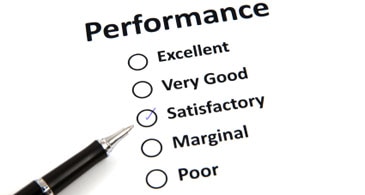14 Purchasing Metrics that Buyers Can’t Ignore
Important purchasing metrics enable you to streamline your department and save money
2013-12-02
 Metrics are a hot topic these days across most organizational departments. Defined as any type of measurement used to gauge a quantifiable business performance component (such as return on investment, customer retention rates, and so forth), metrics fall under the “business intelligence” umbrella and help firms gather, retain, analyze and leverage data for improved decision making.
Metrics are a hot topic these days across most organizational departments. Defined as any type of measurement used to gauge a quantifiable business performance component (such as return on investment, customer retention rates, and so forth), metrics fall under the “business intelligence” umbrella and help firms gather, retain, analyze and leverage data for improved decision making.
“Metrics are playing an increasingly important role in today’s purchasing departments,” says Paulo Moretti, principal at Detroit-based supply chain consulting firm PM2Consult, “in that they allow buyers to assess their current practices and fine-tune them in a way that helps boost their companies’ bottom lines.”
The million-dollar question, of course, is exactly what metrics should electronics buyers be gathering, assessing and leveraging to reach their cost-reduction goals?
According to Moretti, purchasing agents should divide their efforts across three different categories: clients, suppliers and the sourcing process.
Here are 14 different metrics to keep an eye on across each of the three categories:
Working with suppliers

“Metrics are playing an increasingly important role in today’s purchasing departments,” says Paulo Moretti, principal at Detroit-based supply chain consulting firm PM2Consult, “in that they allow buyers to assess their current practices and fine-tune them in a way that helps boost their companies’ bottom lines.”Buyers can use a scorecarding process to aggregate performance metrics for their suppliers and then compare the data both against historical performance of the vendors in question and that of other supply sources (that is, your vendors’ competitors). Here are five metrics to consider:
- Quality measures – delivery (right place, right time, right documentation), product/service quality (adherence to specifications), Service Level Agreement (SLA) performance and invoice accuracy.
- Financial considerations – cost competitiveness (how competitive is the pricing this supplier offers you versus that which it offers to other customers?), total benefits, cost trends (percentage variance compared to previous year), income statement/balance sheet (supplier’s financial health) and total cost of ownership reduction.
- Technology – innovation (ability to continually improve the product offering), research and development (percentage of revenue supplier spends on product development), new products (ability to develop new products and generate new revenue) and sustainability (ability and willingness to attain company goals).
- Risk – financial (income statement, balance sheet, cash flow stress), trade compliance (adherence to import procedures), product stewardship (environmental, health and safety, product handling) and code of conduct (adherence to United Nations Global Compact).
- Services – responsiveness (ability/willingness to respond to either complaints or changes needed), support (ability to deliver post-sale value, customer service, technical assistance), and service (ability to deliver supply chain simplification).
Managing clients/users
The metrics related to the individuals or organizations that are acquiring and/or using the products that your department purchases include:
- Customer satisfaction surveys – to measure the level of satisfaction year-over-year from clients. This metric should be compared to a baseline customer satisfaction level.
- Risk level – risk of supply disruption and its impact on your clients/users.
- Spend – the total annual amount of money that the clients spend with your company.
- Benefits – the cost savings, capital savings and other advantages that the client relationship provides.
- Process – how it currently works and how it can be improved.
- Sourcing management – client involvement in the sourcing strategy development and with supplier negotiations.
Your purchasing department
There are numerous metrics that electronics buyers can use to track both efficiency and effectiveness in their departments. Here are the most important ones:
- Organizational metrics – the number of purchasing full-time equivalent (FTE) employees versus FTE employees companywide and the total amount of spend managed by purchasing versus total company spend.
- Tactical metrics – number of purchase orders and invoices per FTE and purchasing operating costs per FTE, purchasing order and invoice.
- Strategic metrics – purchasing operating costs per FTE, total spend (that is, all outside purchasing) managed by each buyer and addressable spend (that is, all acquisitions made within a specific year).
Putting the numbers to work
Using these 14 metrics, purchasing agents will be well-equipped to make wise cost-cutting decisions based on real numbers and historical data versus assumptions and knee-jerk reactions. “Buyers can use this information to help their companies drive measurable business results,” says Moretti, “and transform the way they negotiate with, and manage relationships with, key business partners.”
聲明:各作者及/或論壇參與者於本網站所發表之意見、理念和觀點,概不反映 DigiKey 的意見、理念和觀點,亦非 DigiKey 的正式原則。







